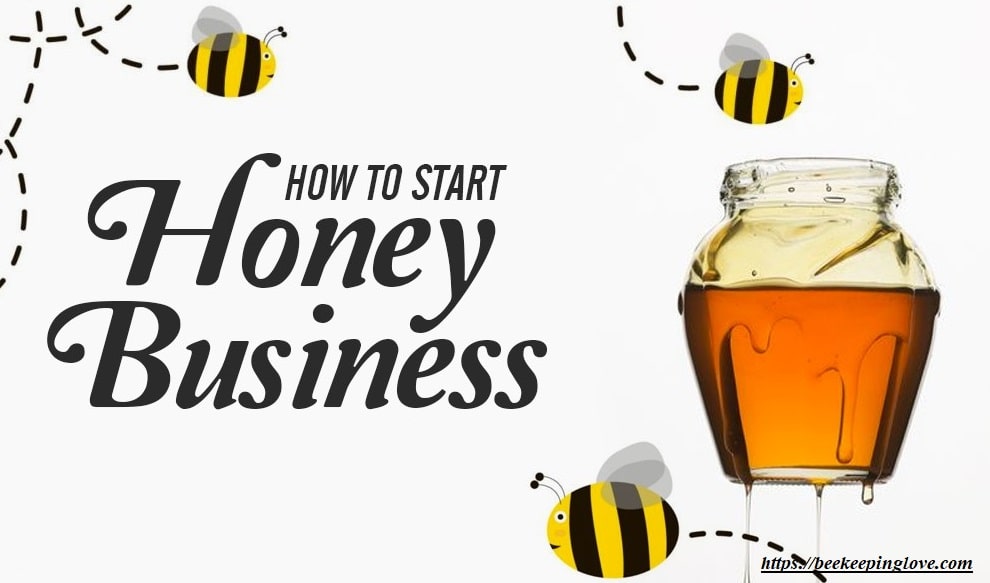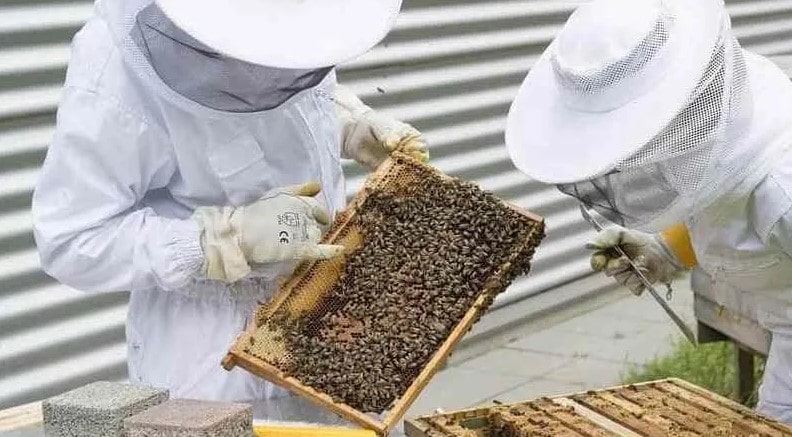Starting a honey business will necessitate careful planning and preparation before you begin any operations. You’ll need enough money to buy the goods and equipment you will need. It is also beneficial to have some knowledge of beekeeping and business management in general. This tutorial on how to establish a honey business covers all you will need to know before diving into this delectable industry.
Honey business
Before launching a honey business, you should be familiar with beekeeping. You can get your business up and going with the correct setup and willingness to learn. Take it slowly initially and gradually expand your honey business. Start with a few hives and then build up as you gain beekeeping experience. There are three major considerations when starting a honey business:
- Providing bees with a safe haven.
- How you intend to keep the shelter in a good condition for the bees’ continuous use.
- Honeybee goods are harvested from the beehive.

Considerations before starting a honey bee business plan
A solid honey business will be easier to operate if you have some control over production and marketing. It makes purchasing equipment and preparing honey for marketing much easier. Here are some criteria you can keep in mind:
-
Purchasing the required equipment
Before you can even consider starting a beekeeping business, you must first acquire the essential equipment. The beehives, protective clothing, veils, and gloves are all part of the equipment. These pieces of safety equipment are essential for working safely among bees. Set aside a portion of your investment funds for the purchase of additional equipment and beehive treatments for the upkeep of healthy honeybee colonies.
The honey extractor is one of the most significant pieces of beekeeping equipment. A big extractor that can take multiple frames at once is the greatest option for large honey operations. Commercial honey extractors enable you to extract honey from many beehive frames in a single day. You can put off buying a honey extractor until it is time to gather honey.
-
How to start a honey bee colony
Following the acquisition of the appropriate equipment, you will require a bee colony. You can either purchase a colony or catch a swarm yourself. It is critical to start with a healthy colony in order to create strong honeybee colonies throughout your apiary. By introducing new queen bees, beekeepers can improve the genetics of their honeybee colonies. Trapping a wild swarming honeybee colony is an excellent technique to improve your apiary’s genetics.
-
Beekeeping books
It is critical to have a few beekeeping books on hand. The skill level requirements for beekeeping books vary. The greatest beekeepers have books for all levels of experience, from novice to professional. As you gain experience, you will discover that each book takes on a new meaning. Starting beekeeping with a few books to guide you makes the process simple.
Top beekeeping books include “The Backyard Beekeeper” by Kim Flottum, “Beekeeping for Dummies” by Howland Blackiston, “The Beekeeper’s Handbook” by Diana Sammataro, “First Lessons in Beekeeping” by Keith Delaplane and “Practical Beekeeping” by Clive de Bruyn.
>>> Read more: Top 5 Best Beekeeping Books For Beginners
-
Participating in local clubs
Joining a beekeeping club is an excellent opportunity to meet other beekeepers. They will provide you with a variety of important beekeeping suggestions. A beekeeping club is also a fantastic way to get beekeeping books. If necessary, you can borrow or rent equipment from other beekeepers before purchasing your own. If there is not a club in your region, consider creating one if you know any other beekeepers.
A honey business plan for sale
If you have a plan for your honey business, it will function more smoothly. A commercial beekeeping business plan might assist you in better understanding how to set up the firm. It establishes a foundation for you to start and build your honey business. In addition, the business plan assists you in thinking long-term about business and how to best manage expenses.
A commercial honey business plan detail
A commercial beekeeping business plan includes, among other things, the following sections:
- Mission and goals of the business
- Implementation strategy.
- Income and spending budget for a business.
- An executive summary of the honey business.
- Enterprise analysis and planning.
- A marketing plan.
- Break-even analysis.
Creating a marketing strategy
The strategy outlines the prices, quantity goals, and time required to generate returns for the business. It considers market conditions as well as the desires of the customers you wish to reach. Honey products can be distributed by individual beekeepers or by marketing companies.
A marketing budget, which is defined in a marketing strategy, outlines the sources of marketing resources as well as how they will be used. It should be included in your business plan for commercial beekeeping

Storing honey
Honey can be stored and packaged later. You can sell your honey locally or in larger markets. Other types of advertising for honey business items are also used by beekeepers.
Beekeepers will also store honey in comb for a period of time before extracting it. Honey in comb remains in its natural state for a long time. Honey stored in a jar that is not frequently opened preserves it nutritious and of great quality for a long time. You can also store honey in the refrigerator without harming its quality.
Beekeeping business profit influencing factors
- Pests, diseases and predators
Controlling honeybee pests and diseases allows bee colonies to thrive. To keep pests and diseases at bay, beekeepers should employ a variety of techniques. One frequent method is to use chemicals in a beehive. When dealing with honeybee pests, it is recommended to use a variety of chemical treatments throughout time to avoid resistance development. You should also practice proper beehive cleanliness and perform frequent beehive inspections.
- How many hives are required to make a profit?
Large enterprises promise higher earnings due to better asset use. Because they also produce more honey, allowing beekeepers to earn more money than smaller enterprises. A beekeeping operation with more than 25 beehives will give a high profit margin if you apply adequate beekeeping techniques.
- Equipment costs
It is best to buy the majority of the assets you will require when starting a honey business. Beekeeping suits and a honey extractor are also valuable assets. Increase the number of beehives you have and the other assets you have as time goes on.
- Labor costs
The average hourly wage in beekeeping is $12. Hiring skilled laborers who work quickly and make few mistakes is essential for a honey business with many beehives. You may have to pay a little more for skilled labor, but it will be worth it in the long run.
- Keeping records
Beekeeping records are an often-overlooked aspect of the honey industry. Beekeepers should keep two sorts of records: records of beehive activities and records of honey business income and expenses. You do not need to keep detailed records or be proficient in financial accounting. Simple records that capture critical information are sufficient for broad use.
Conclusion
It is simple to start and run your own beekeeping business. It is entirely up to you whether you conduct small-scale or large-scale beekeeping. With experience and improved financial resources, you can grow your honey business to the scale you choose. This is one of the most effective methods for establishing and operating a large honey business.
Related Posts:
